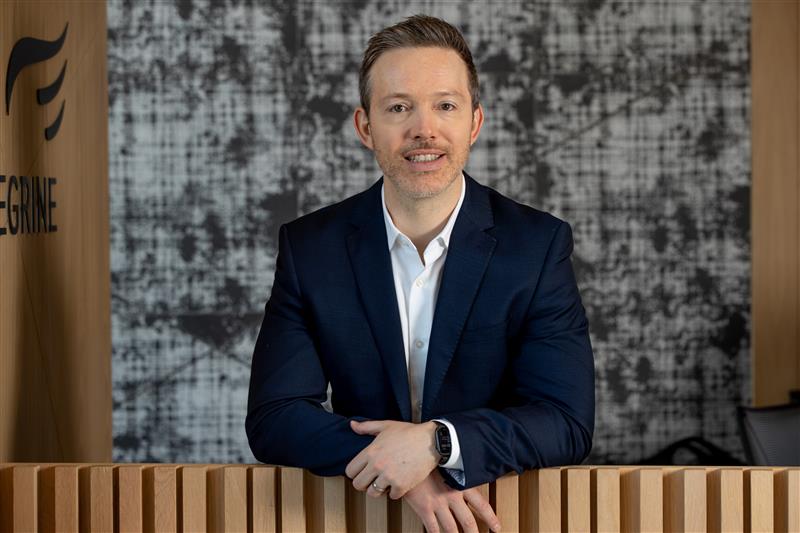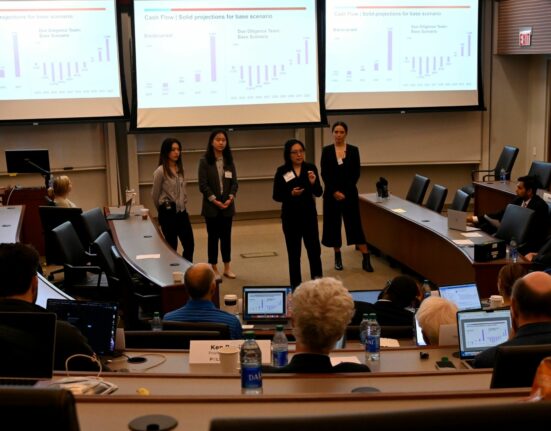You can also listen to this podcast on iono.fm here.
Download the free LiSTN audio app on Google Play, Apple or here.
RYK VAN NIEKERK: Welcome to this week’s edition of the Be a Better Investor Podcast. It’s a podcast where I speak to finance professionals about their views on investments – not only in their professional capacity, but also in their personal capacity.
My guest today is Jacques Conradie. He’s the chief executive officer and a portfolio manager at Peregrine Capital. He’s an actuary who started his career in 2006 with Old Mutual and joined Peregrine a year later in 2007.
Listeners will remember I spoke to Jacques on this podcast in January this year, and you may remember that he’s the guy who started to manage his father’s portfolio while he was still at university. The podcast is still available on Moneyweb.co.za.
It has been one of the most popular downloaded podcasts this year, so if you haven’t listened to it, log in – it’s available – and listen to it.
Listen/read: Meet the asset manager who started managing his dad’s portfolio at varsity
Jacques, thank you so much for coming in to the studio again today. I would like to talk about emotion and the way amateur investors should look at positive performances and negative performances, because sometimes emotion comes in and every single asset manager would say: ‘Listen, take emotion out of decisions.’
But it’s not always that easy and it’s not always easy to know whether there is no emotion involved in a decision. So let’s start off with emotion.
How do you think people – and especially young people – should view emotion and identify it when they take decisions?
JACQUES CONRADIE: Hi Ryk, it’s great to be here again. It’s interesting that when you start your investing career – especially someone like me who comes from a numerical and let’s say mathematical background – you think that investing is a lot about analysis and going through the numbers and building models and forecasting things; and that certainly is a key part of it.
But the longer you are in investments, the more you realise emotions are very much as important. It’s a longer [challenge] to learn, because I think there’s a lot you can do by reading and trying to understand and learn from other people.
But a lot of the experience here comes from living through various cycles and dealing with your own emotions through those cycles, seeing how you feel, how you need to behave. So it certainly is the one with a long learning curve.
The one thing I’d say here is markets behave in the way they do because humans have emotions. That’s why we have crazy bull markets like the tech bull market of ’98 and ’99.
People see their neighbours and their friends making money and they can’t help but chase the market upwards.
That’s why people chase it, and that’s why things get very expensive at the top.
And then, when bear markets happen and markets go down, no one likes taking a loss. People would rather sell out than continue having losses. That’s why markets also massively overshoot on the downside.
If you understand that, then you can realise that having stable emotions and understanding your own emotions can actually give you a meaningful edge.
One simple rule of thumb is always consider whether you should be doing the exact opposite of what you feel like doing.
Now you shouldn’t automatically act that way, but if you feel euphoric and very happy and you love a company, I’ve learned over time that should be an immediate signal to say ‘Wait a second …’
In previous times in my career when I felt like this, it was a good time to sell that share; so I don’t have to automatically sell it, but at least I need to consider a sell decision.
And in the office when everyone’s bearish and no one thinks that load shedding will ever be fixed, and that SA shares will never go up again, maybe that’s the time you want to consider buying.
It’s not an automatic rule, but certainly you should invert that emotion and think [perhaps] ‘do the opposite of what my natural instincts are telling me here’.
RYK VAN NIEKERK: Is that not a contrarian view, because not all professional investors are contrarian investors?
JACQUES CONRADIE: Correct. That’s certainly what’s worked for us. That’s our model.
Sometimes you want to be there with the crowd, but most of the time you’re going to make money if you do the opposite of what everyone else is doing, because if everyone loves a share, it’s already expensive and it’s probably too late to buy it.
Not always, but a lot of the time. Inherently in our business and our team we’ve got a bunch of contrarians; we like to do our own thing and not just follow the crowd – that’s certainly how we think.
RYK VAN NIEKERK: Do you look at the investment decisions of other fund managers and asset managers? Do you compare those with your strategy?
JACQUES CONRADIE: There are two aspects [to that]. I think there are a lot of really great global investors that I follow and that I’ve studied, let’s say, to get a lot of my investment knowledge.
Those are guys like Warren Buffett where I’ve read every single annual letter, I’ve read basically every book about him, and guys like George Soros, who was really the first macro global hedge fund manager. Stanley Druckenmiller worked for Soros and then ran his own thing. So these are some of my investment heroes that I follow. Whenever you see them speak about markets, you always listen.
And then let’s say – in South Africa specifically – we are always looking for any piece of information we get. So when we see other fund managers speaking, we’ll listen. But in that case it’s less to follow, but [rather to ask whether there is] anything interesting I’m hearing there that could inform my view of a company.
But another interesting bit there is that over time you realise that you need to understand the prospects for a company, but you also need to understand what other investors in that share are thinking. I’ll give you an example.
One of my first success stories [was] figuring out that Capitec was a great investment back in, oh, 2008/09.
We might have spoken about it on an earlier occasion, but the interesting thing for me there was when I went to those results presentations, you saw the bank analysts of the sell-side firms and other long-onlys there. And the only things they were asking about, Ryk, were, ‘How’s your unsecured lending book doing? What’s happening with the impairments? How have the impairments been in the last few months?’ They completely missed the wood for the trees.
The real thing with Capitec was it was going to be the biggest transactional bank in SA. Now that part of the business was small, but I … opened an account for my wife at the time and she told me she absolutely loved this thing.
RYK VAN NIEKERK: But how did you know that, because at that stage they were still very, very small, and they were very focused on microlending.
JACQUES CONRADIE: They were. But if you spent the time and you spoke with management like Riaan Stassen, who was the CEO and Andre [du Plessis], the FD back in the day, microlending was the big money spinner, but the long-term vision was always to be an amazing transactional bank. They were using the microlending profits to build the transactional banking.
So you could meet with management if you took the time and you could see that was their vision. And if you opened a transactional account for yourself or a family member, you could see how good that was. But no one was focused on that. That almost gave us the confidence that ‘We are seeing something here that’s not priced in, that people aren’t seeing, because they’re all obsessed with the unsecured side and they’re missing the transactional opportunity’.
Now it certainly turned out better than I would’ve thought. I certainly didn’t think they would sit here with 20 million clients kind of 15 years later. But you could see there was something there that the market was missing.
So that’s also why it’s useful to see what others are thinking because maybe you can see what they are missing – and what you are seeing.
RYK VAN NIEKERK: How does that differ from somebody liking a company like, let’s say, MTN, and a person getting great service from one of their outlets in a mall, because that changes your perception of the company. Suddenly you think listen, I received a lot better service from MTN than Vodacom previously, so let me invest in MTN – because that swings emotion and perceptions.
JACQUES CONRADIE: Yes. I would typically tell people to think about the companies you interact with, and where you see good service and you don’t, and whether that can be a potential investment decision.
Now, what you always have to think about is how big that company is. How many different products does it have, and how big is the product that you kind of engage with?
If we go to the Capitec example, that needed banking – and transactional banking was in the end all they were after. So having a good view of that is almost the whole business, whereas MTN is like in 25 different countries, with Nigeria as the biggest profit-generator, and South Africa is maybe 20% or 15% of the valuation.
So that is a relevant data point, but it’s only a small part of the business and only one. So I think it is always worth looking at those things. But then in MTN you’ve got to also say, what’s the naira/dollar doing? Maybe the naira has halved in the last year.
So there are always many things that go into an investment decision. I’d look at things like that, but you have to also look at their complete picture.
RYK VAN NIEKERK: Yes, you can’t take an investment decision based on a good employee in a mall. That could be quite dangerous.
Let’s talk about consistency, because whenever you invest and you have a portfolio, you would like to see the portfolio increase in value and consistently do so. I think most asset managers send out statements every quarter and sometimes they are higher, sometimes lower.
Of course when you invest in equities a linear growth trajectory is impossible. No asset manager can achieve that. Do you think it should influence an investor, especially investment decisions, if there are maybe two or three consecutive quarters with a red number which raises some concerns?
JACQUES CONRADIE: Look, in investing what we do is we look at a company or a share and try to predict how that company will perform in the future.
The future inherently is uncertain, and there’s this thing called ‘randomness’ where things can happen that no one could have predicted.
So it’s an interesting thing when you start off in your career and look back at a company’s share price graph – and there are obviously a certain set of events happen that cause that.
However, on a forward-looking base people often think that is the only path that could have been travelled; yet the future is always probabilistic. There’s a range of outcomes that can happen and you cannot perfectly know.
There are good scenarios that could happen to a company but something could go wrong and a bad outcome could happen. So we always think probabilistically and you try to find companies where there’s a high likelihood of you doing well and good things happening, but you can almost never avoid the chance that something happens that’s unforeseen or purely random and where you will lose money.
So how does one deal with that? You diversify your ideas somewhat.
You go bigger in your best ideas where you’re most sure – but you can never be 100% sure on almost anything in investing. So you build a diversified portfolio of independent good ideas, and then if you do that well most of the time things will go well, because if you’re right and seven or eight out of 10 of your ideas work, then that will offset the one or two or three where that doesn’t work.
I think if you diversify nicely, you can have some consistency, but it’s impossible – because you’re dealing with the future – to have perfect consistency unless you’ve cash in the bank. But if you have cash in the bank, you can’t outperform what the interest rate is so you have to take some risk to generate excess returns, and that is part of what investing is.
If you then look at someone’s performance, when would poor performance be a sign that something’s not working? I think that depends on the length of the track record – how long has someone been consistently doing well? That gives you lots of confidence that their process or their philosophy consistently generates outperformance.
So the longer a track record you have, I think the longer a period of underperformance you can stomach and say, ‘It’s just bad luck or randomness’.
The longer it goes on, the more likely it is that there’s some signal there is something in the process not working. Did they lose key staff members, did the market environment change and their philosophy doesn’t work in that? So you always have to consider it. But I think the longer the track record, the longer you have to wait [to see] whether it’s a signal and not just noise.
RYK VAN NIEKERK: You will see when asset managers market their products there’s always an asterisk that says, ‘past performance is not indicative of future performance’. How important is past performance when somebody would evaluate or consider a different collective investment or unit trust – how important is that past performance?
JACQUES CONRADIE: I would say that there’s always a range of things to consider.
That range is: Who are the people managing it, what’s the company behind it, and what’s their approach to making money?
But out of all those things, I’d say the most important thing has to be past performance – because that’s numerical, factual and proven.
It’s not the only thing, but for me it’s the most important of all the things. That’s also how I pick the fund managers I learn from globally or admire.
That’s why you pick Buffett to study from. He’s made I think 10 000 or is it 100 000 times [his] initial investment over 60 years. That past performance shows you at least he knew what he was doing over an extended 60- or 70-year period of time. It’s too long to be randomness.
[But] if you look at someone with a one- or two-year track record, it’s way too short to judge if it’s investment skill or luck because in the short term anyone throwing darts can pick a few winners. A year or two is too short a period to identify [whether it’s] skill or luck. The longer the time period gets, the surer you are that it’s skill and not luck.
RYK VAN NIEKERK: That’s an interesting perspective, but I think it’s in many ways logical. But in many ways the choice of an asset manager is very, very important, sometimes even more important than choosing the actual investment. How do you research the quality of an asset manager? Is it just based on performance or should somebody look at something else or other metrics?
JACQUES CONRADIE: I would agree with you that it’s a hard thing to do. I’ll give you some of my views, but this is not our core game. Obviously our core business is finding the shares that are going to go on our portfolio that’ll outperform. So that’s where we spend all our time. Let’s say for all our team members we just have our money in our funds where we can see what we do and we back ourselves. So I don’t spend a whole lot of time picking other managers.
RYK VAN NIEKERK: I’m talking about from an investor’s perspective, somebody getting into the market.
JACQUES CONRADIE: I think there it has to be a good starting point, looking at 10- and 20-year returns. That has to be some kind of starting point to ask what the long-term track record is. That’s as good a place as any to start looking for it.
The other thing I think is vital is to try to see how correlated this return is with the JSE – basically if the return is just 1.1 times the JSE or 1% more in a typical year, but it’s always when the JSE is up, it’s up, and when the JSE is down it’s down, then you could just as well potentially take index exposure.
So I think it’s a good sign if the return is somewhat uncorrelated with the overall market, because that identifies that this manager has some way of picking opportunities that [is] not just matching the overall index.
They’ve got a process of going through the 200 companies in SA and finding the ones that they think will outperform.
And then the other thing to do is if you have investment skill you can go and read the manager’s annual or quarterly letters, see how they think about markets, see how they write, see if you agree with that, and see if that philosophy makes sense.
RYK VAN NIEKERK: But, you see, not many people can do that. If you read something from Warren Buffett – he writes a letter to shareholders once a year and many people see it as a bible – who’s not going to agree with him? And it’s the same here in South Africa. We have very, very good fund managers, and I don’t think the normal retail investor has the knowledge and the skill to disagree.
One of the core topics of this podcast is how you evaluate a good investment and a bad investment, because sometimes you can have, say, in a portfolio, growth of 10% – and in another portfolio a growth of 8%. Then the 8% portfolio could have outperformed the 10% portfolio, because it was at vastly less risk.
So let’s talk about selling and buying decisions. Let’s start with selling decisions, because that is a difficult one. There’s always emotion involved. Say you have an investment, let’s use a unit trust, an equity unit trust. It’s not performing well. How long do you hold on to it before you sell it? Also be sure that there is no emotion involved in that decision.
JACQUES CONRADIE: I’ll start with how we think about individual shares, and then see if we can take that into unit trusts.
When we invest in an individual company, up front you want to value that company. You want to determine what the business is worth. So if you determine the company’s worth R100 we typically buy it at R60 or lower, because you want some margin of safety in case you’re wrong. And then as that approaches fair value, you firstly have to update your fair value if there’s new economic news or news from the company.
But if your fair value remains updated and [the stock] approaches your fair value, you have to exit it. You have to have the discipline, and you can’t fall in love with something.
I think a manager is somewhat different because you’re not buying into a fund for what the fair value is. You’re buying it for the skill of the manager. What I’d say you do is you first have to look at why you invest here. Is it someone with a very long track record? If it’s based on a 10- or 20‑year track record of outperformance at lower risk in the market, then I think you want to stick with that for a fairly long period of time.
I think people often want to cut things too early if they have short-term underperformance because human nature is that you want to chase the short-term winner, you want to chase the best performer of last year.
So if you have properly made your decision based on long-term analysis, I think you should have quite a long period over which you make any sell decision. You shouldn’t do it irrationally.
However, if you’re chasing someone where they had a very good one-year performance, or they may be a new manager, then I think you much more quickly have to potentially look at making an exit decision because you made that more on a gut feel or with limited information, and maybe three or six months of bad performance quickly unwinds the one year of good performance – and then was there really any skill to your picking?
So I think if you’ve done your analysis properly upfront, you should give yourself quite a long period before you change. And you shouldn’t change it too often. If you put your portfolio together properly, I think it should be fairly stable.
We see a lot of pension funds and informed investors and, let’s say, the university endowments in the US that have kind of model allocators, that have fairly stable long-term portfolios because they do a lot of work upfront to pick the right manager. You need quite a lot of evidence then to prove that you were wrong with that decision.
RYK VAN NIEKERK: Do you think people investing directly in shares hold those shares for longer than people who invest through collective investment schemes like unit trusts?
JACQUES CONRADIE: I haven’t seen [any] analysis of the data there. I guess that the one benefit of owning individual shares is that one thing people do is when they have a Naspers or a Capitec that’s done very well for them, they’ll often keep that because it’s their favourite share; it’s a big part of their portfolio and there’s a nice story linked to it.
So I’m sure there are lots of wealthy people in Stellenbosch who bought some Capitec shares early and kept them. In the same way there are probably many wealthy people in South Africa who got some Naspers or bought some Naspers and just kept it.
So I think picking a really great compounder that’s going to outperform for a long time, keeping that is one great way of building wealth.
On the share side the rules are somewhat different because sometimes you have to panic and sell a share because something went really badly wrong.
Steinhoff fell 50% on day one, so that was the best ever time to sell.
RYK VAN NIEKERK: Tongaat, EOH.
JACQUES CONRADIE: Yes. Even the next day, down 40% – and you should sell again. It’s different from my view as a fund manager, because it’s not a diversified portfolio, it’s one thing and there you really have to look at what’s the reality happening at that company, what’s happening to the share price, and how should I act?
RYK VAN NIEKERK: Is it a science? How much can you actually calculate and how much information should you get from other sources when you form your investment decision, or how do you come to a number, a fair-value number?
JACQUES CONRADIE: I’d say it’s certainly a blend of a science and an art.
Being strong numerically and doing the work and going through company results is a vital ingredient. That’s how you pick up EOH. You go in the financials, and you go through the company notes, and you go into the detail of the companies they bought, and you see what’s going on there.
That’s how we could figure out here was an issue with the companies they [EOH] acquired. You then look at the cash flow statement and you figure out the cash isn’t tying up with the companies they’re buying.
So it certainly is a part of it and that’s going to find you some winners and it’s going to help you avoid some losers just there.
But in many cases that’s not the only tool. You need to get info on how the business is doing from speaking to competitors, speaking to their clients, trying the product yourself.
One of my lines to our investors is: ‘There is just no silver bullet.’
You need like a hundred lead bullets and each of these things is one of those bullets. You need to do the work and the financials. You need to try the products, speak to other clients, speak to competitors, have your emotions in check, and make sure you buy with a margin of safety because stuff could happen. Even if you have done all the work, a random thing can happen that kind of goes wrong. But if you had a margin of safety, you could still get out without a loss – or with some gain.
So unfortunately for an individual investor it is hard because there are many things I think you’ve got to do correctly to maximise your odds.
That is why maybe having some split between picking fund managers that do this as their job and trying some of it yourself if you love it is I think a good mix for a lot of people.
RYK VAN NIEKERK: What you’re also saying is that many CAs, actuaries, look at the same set of financial results and come to different conclusions. One would see a buy opportunity and the other one say, listen, this is a dog, stay away. So that’s a skill blended with art.
JACQUES CONRADIE: Yes.
That’s what makes this I think a beautiful game – that every single time you are buying a share you are buying it from someone that’s selling.
By definition, at that moment there’s someone with the exact opposite view.
And that’s what makes this, I think, the most interesting career for me – that you’re competing with other smart people and you always have to be learning to maintain an edge.
And I think it’s one of the things that you just won’t get tired of if you love learning and love solving complex problems.
RYK VAN NIEKERK: I know amateur investors can’t see who sells a share you are buying. Can you see who actually sells the share to you when you complete a transaction? Can you see, for example, if Old Mutual sells a share and you buy it?
JACQUES CONRADIE: You cannot, I believe. Back in the day, 25/30 years before my time, you could see on the JSE which broker advertised the share. So I think you could at least see it’s being sold through Standard Bank or through Absa, for example.
However, what you can do is if you bought a share and you want to know, sometimes there’ll be an announcement to say, Allan Gray has dropped below 5% of the shares in issue. Then you know, oh okay, Alan Gray was selling.
And you can also download company share registers. Then you don’t know from whom you specifically bought, but you could see during the last month Coronation and Ninety One went down, and maybe kind of Peregrine Capital and someone else went up. So then you know roughly who it is, and it is somewhat relevant to try to ask if this person is potentially more or less informed than I am. What are they thinking?
That’s an important part of figuring out why they are selling. Are they seeing something we are not or are they selling for some other reason – perhaps just to make good money and to bank some profit or whatever.
RYK VAN NIEKERK: Would it make a difference if you could see?
JACQUES CONRADIE: It would probably make a difference, Ryk. It would make a difference because it would help you inform whether you think you have a better shot at knowing more than the seller, because you typically want to be doing something if you think you’re more informed than the seller, or you’ve done more work or have a more informed opinion.
RYK VAN NIEKERK: Are you still nervous when you take a big position in a company?
JACQUES CONRADIE: Always, always. I mean you’re obviously confident of your process and you’ve done this many times before, but I think there should be some level of nervousness to make sure you’ve done your work, you haven’t missed anything, you’ve gone through your full process, kind of ticked all the boxes, gone through your checklist.
And obviously there’s just nervousness that something random could go wrong.
Even though you did everything right and there’s a lot of upside, some unfortunate thing could happen that derails things. I think it’s not kind of stress in that sense, but it’s more, let’s say, some tension and excitement rather than pure nervousness.
RYK VAN NIEKERK: Jacques, thank you so much for your time today and for coming into the studio and for sharing your insights with us.
JACQUES CONRADIE: Awsome, Ryk, I really enjoyed it. Thank you very much.
RYK VAN NIEKERK: That was Jacques Conradie, chief executive of Peregrine Capital, as well as a portfolio manager.







